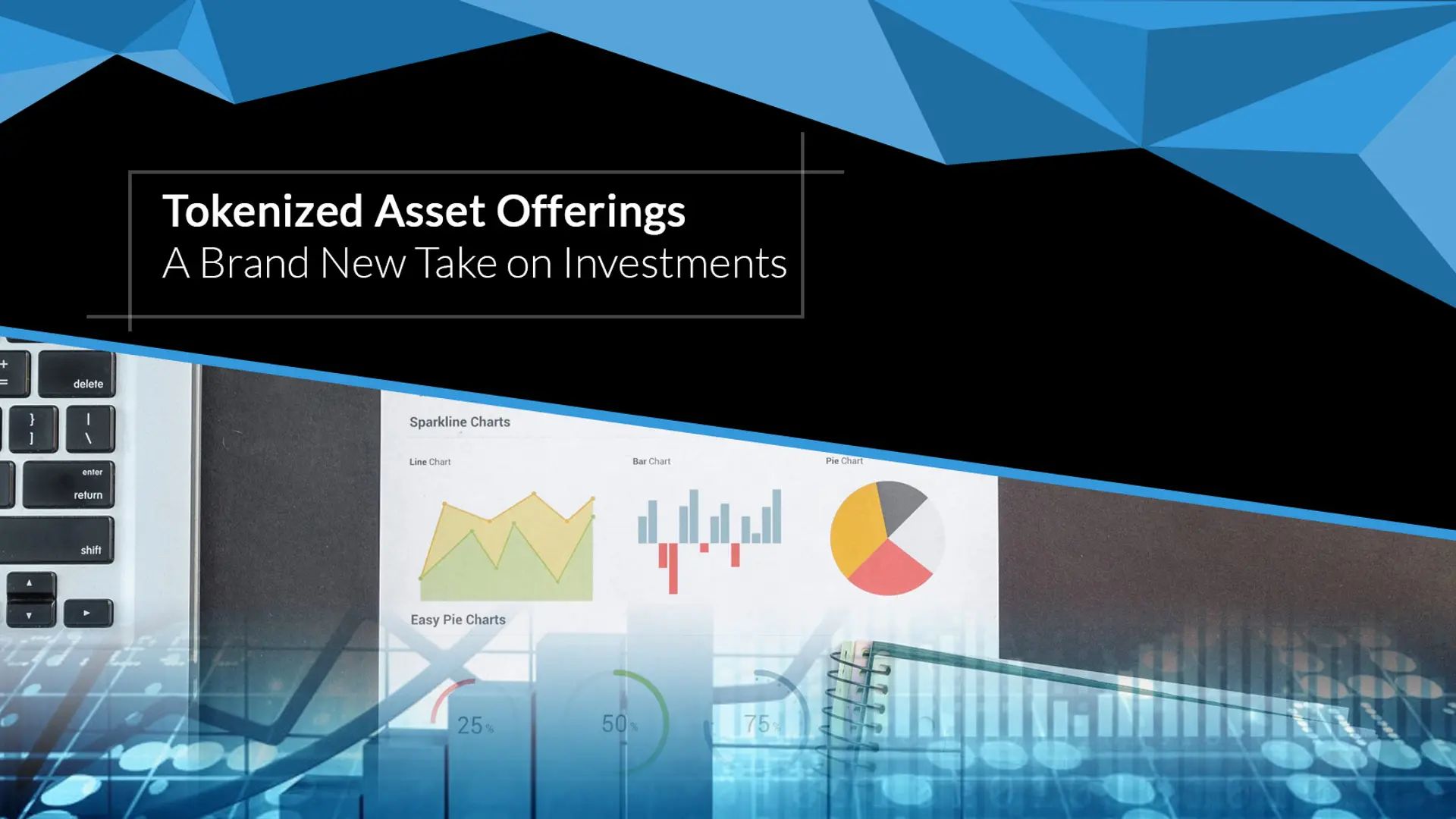

Tokenized Asset Offerings - A brand new take on investments
Asset Tokenization 101
Bitcoin and the blockchain have forever altered our perception of assets and investing. Blockchain enables fractional investing, mobilizes assets and empowers all sections of the market in the process.
Asset tokenization, in layman’s terms, simplifies converting the rights over an asset of economic worth into a digital token. These tokens are recorded and administered on a blockchain network, a transparent and unchanging distributed ledger that serves as a permanent record of transactions that occur on it.
Tokenization is therefore driven by improved levels of liquidity, data integrity, and transparency. Further, investors can diversify their investments by means of fractional investing in various assets, instead of concentrating their resources at one source.
Technically speaking, tokenization refers to the process of issuing security tokens. This is referred to as an STO (Security Token Offering), in order to distinguish it from other ICOs which may be issuing payment, utility, or equity tokens.
STOs are utilized to develop an electronic representation of an asset -- a security token; this token could be a share in a firm, ownership to a real estate property, or involvement in an investment fund.
These security tokens are subsequently traded in a secondary market.
Asset Tokenization explained
Prior to tokenization, an asset has to be valued and evaluated. Tokens can be issued once this preliminary analysis is complete.
Here’s a summarization of this process:
- Asset identification; valuation is needed for assets that are not popularly traded
- Asset and confirmation of evaluation; upon finalization of audits, the smart contract has to be developed
- Generation of smart contracts, tokenomics, and tokenization platforms; This is not as straightforward as it seems. There are several solutions if you’re looking to avoid complicated code. The last thing you should be doing is using a generic smart contract that you happen to stumble upon.
- Cash flow or equity; The method of tokenization needs to be determined. For example, is it going to be through equity, or is it going to be through profit-sharing/cash flow?
- Reg D, Reg A, or Reg A+ filing with law firms; Reg D is the advisable option when filing for a new token, however, if filing for a share space filing -- like an IPO, this is not the case.
- After the above has been filed, tokens are ready for sale/distribution; The token can be launched on a security compliant exchange, provided the 1-year wait time has been fulfilled. If you want to circumvent the waiting period, you have to file a share space filing. Distribution of the tokens is an asset- and token- dependent.
Legal supervision is recommended during the process to ensure compliance.
The advantages of tokenization
Tokenization’s popularity is positively influenced by the blockchain.
- A permanent record of transactions: The documented transactions and history of ownership cannot be deleted
- Universal access: All one needs is a device with an internet connection, along with the login credentials to access the data. Transactions are accessible the world over, 24x7, 365.
- Affordable: Smart contracts controlling blockchain mitigate the need for any kind of medication that might impact costs. Transparency of the blockchain eliminates any gaps in data/information that might happen due to transfers in ownership.
The tech behind it
Tokenization necessitates amendment onto the traditional blockchain. A protocol that comprises the smart contract chain is required for payments/transferring of legal rights. The wallets that enable storing of your tokens are required as well.
While it might fundamentally be ‘like’ crypto, tokens in the real world can be categorized into utility and security tokens -- unlike crypto. Utility tokens impart access to a service or product. Or, they might provide a specific privilege. Security tokens denote literal ownership of assets, which is convertible into an economic unit for investing purposes.
How will tokenization disrupt investing?
Investing has been plagued by an inverse relationship between the potential for profits/earnings and the liquidity levels of an asset. Tokenization seeks to address this. Tokenization goes beyond borders and involves no middlemen. Trading, as a result, is ensured to be safe and affordable.
Tokenization brings down investing barriers by enabling small scale investors into high stakes games such as commercial real estate investing. Additionally, it provides large-scale investors with diversification options, so they don’t place all of their eggs in one basket.
Ultimately, all of these factors converge into higher liquidity levels which is directly related to how profitable an investment is, over the long term.
The drawback of Tokenized Asset Offerings
The transition from ICOs to TAOs has had two primary consequences:
- Loss of anonymity; With TAOs, everyone who’s involved in the process must be known. Otherwise, they will not be permitted in the market. Whether this is a drawback, however, is open to conjecture.
- Availability; Developing a blockchain startup and raking in millions without the will to invest ceases to be a possibility. Gone are the days of half-hearted investing, with no direct accountability to investors.
Both of these losses are debatable. While they impart more freedom to the issuers and investors, they also foster a fraud and do not safeguard investors in any way. However, there is a solid argument that doing away with these “benefits” can only be advantageous to the market.






1564577705723.jpg?mode=crop&crop=faces&ar=1%3A1&format=auto&w=1920&q=75)